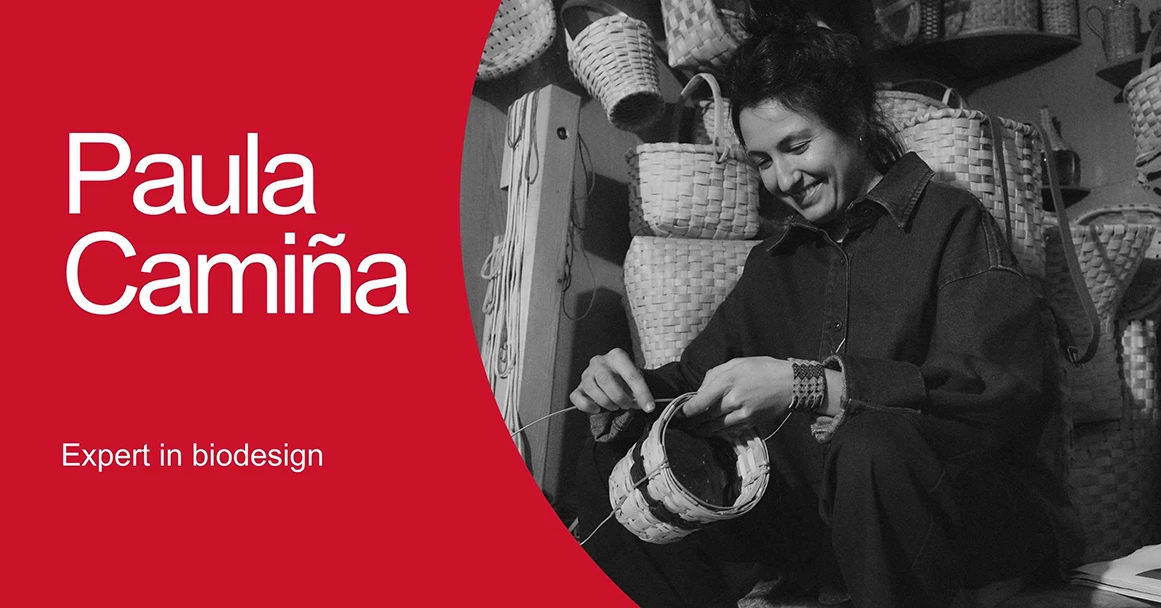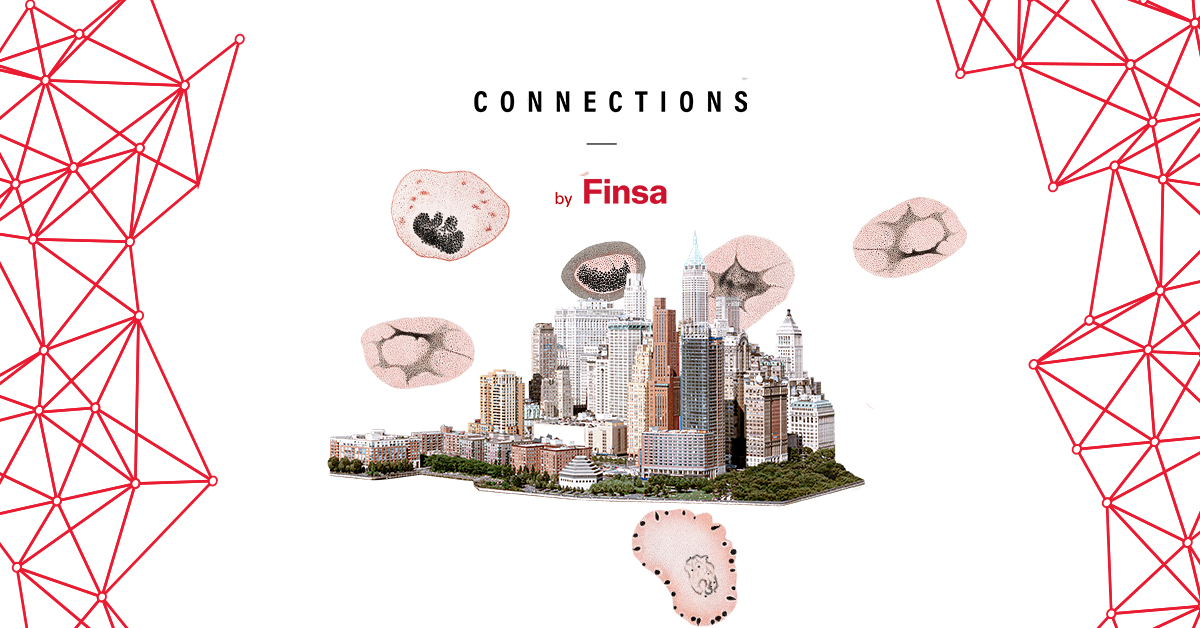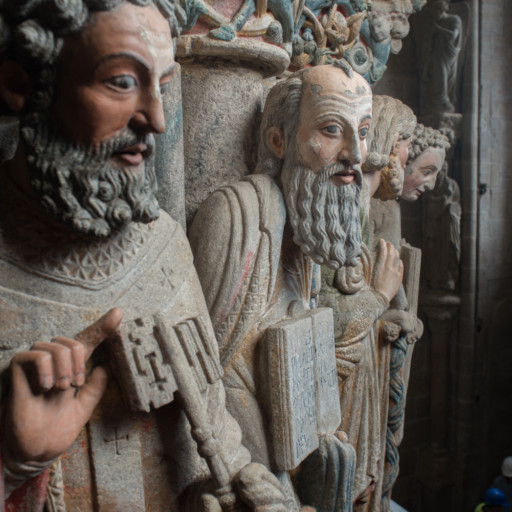Paula Camiña is an Industrial Design and Product Development engineer and an expert in biodesign, a discipline in which she trained in the specific master’s degree offered by Central Saint Martins University in London. In fact, he was part of the first class of that master’s degree at a time when it was not possible to specialize in biodesign anywhere else. Her final project was Co-Obradoiro Galego, in which she collaborated with three basket makers to search for biomaterials that would help rescue the traditional technique. The project continues through courses and conferences, while Camiña combines it with her work in a London firm of natural cosmetics made from algae.
 How did biodesign come into your life? What attracted you to the discipline to specialize in it?
How did biodesign come into your life? What attracted you to the discipline to specialize in it?
While I was studying Industrial Design Engineering and Product Development at the University School of Industrial Design in Ferrol, I considered how I could add value to developing a new product, a new object, or an existing one. Starting with that question, for me the answer was in its materiality. That’s when I came across the discipline of biodesign. I was also looking for masters and came across an article on Deezen talking about a new one focused on biodesign at Central Saint Martins in London. I had already taken a course at that university the previous year, so I knew the center and was interested in studying there. I was part of the first generation of the master’s degree in biodesign at a global level; there was no other type of training in the discipline.
Your master’s thesis project was Co-Obradoiro Galego, in which you used biodesign and biomaterials from shellfish shells or algae in a traditional technique such as basketry. How did the idea come about? How was the development process?
The Master’s Final Project came to me in 2020, during the first lockdown, when I was in Galicia. I started with a scientific search, which is how biodesign projects begin, but with a lot of interest in flexible materials, which I don’t know why have always been my passion. In that process, I discovered projects that the architect Neri Oxman was developing at MIT, which explored large-scale format structures that were flexible and had this biological origin. Based on this existing scientific research and not knowing whether I would be able to return to London and have access to the laboratory, I decided to give the project a local approach, focusing on studying waste in the area, such as shellfish shells, which already showed potential for developing a flexible biomaterial.
Ver esta publicación en Instagram
This led me to have conversations with people who work daily with the sea: shellfish gathering guilds, fishermen, fishing companies… There I was able to learn from their experience and also understand the challenges of their daily lives and learn about the tools. The connection between these conversations and basketry began with the pots. I saw the old wooden baskets and I thought they were very pretty, they were what sparked my interest in basketry. In recent years, this craft has had to be reinvented, since the wood of eucalyptus and pine trees, predominant in our mountains in Galicia, is not compatible with traditional slatted basketry techniques. This is where the idea of introducing this new material made from shellfish shells comes from, following the same principles as basketry: using a local and flexible material. Later we made a second collection with a biomaterial from algae. I spent many days recording, designing the pieces in three basket-making workshops, those of Rubén Berto, Enrique Táboas and Carliños González. In the final phase, back in London, I developed the material in the university laboratory.
Do you think biodesign can be a way to rescue traditional techniques?
Rescue may be a bit too big. But I do believe that biodesign can play a key role in the evolution of traditional techniques. We tend to associate it with futuristic ideas that require super-advanced laboratories, but I believe that biodesign has a lot to learn from traditional trades. Many times, the answers to these questions that we ask ourselves as designers are based on knowledge that already exists and that has been worked on in harmony for a long time, for many generations.
What can biodesign learn from traditional techniques such as basketry?
For example, basketry is based on local resources and sustainable production processes that transform a piece of wood into a sheet that allows us to weave. This process is replicated in biodesign. It is about understanding the local resources we have around us and seeing how we can transform waste, for example, like shellfish shells, into something that can add value to another community. At Co-Obradoiro Galego, waste from the marine industry is converted into a valuable material for woven basketry.
Ver esta publicación en Instagram
You now work at Haeckles, a company that makes natural cosmetics from algae. What is your role?
My position is that of a leader in biodesign. I carry out the innovation part through materials, which can take shape in different ways, from product development, understanding the product as packaging or products themselves. My first project, for example, was to develop an edible glass for a festival environment that had zero environmental impact. What I did was develop a material that was both edible and compostable, and that met the utilitarian requirements of being able to serve as a glass and hold ice, as well as having good taste and aesthetic value.
Is biodesign always sustainable?
Yeah. For me, biodesign is a discipline within the field of design in which scientific principles are applied to a specification. One of the conditions is sustainability. When you start from the fact that not only its origin must be biological, but also the methods used in its development, there is in itself a relationship between biodesign and sustainability. There is also a very important factor that I always emphasize: the difference between a sustainable model and a regenerative model. It is about going further and not only reducing the negative impact, but also promoting its regeneration. It is the idea I was talking about before that we can transform waste into a valuable resource.
Ver esta publicación en Instagram
Do you think there is a role for traditional materials like wood?
Of course. Wood can continue to play a key role. Biodesign must start by considering the materials that already exist in our environment and we must replace them with others only if the new ones really provide significant environmental value. In the Co-Obradoiro Galego project what we do is promote a balance and synergy between the traditional and the innovative, combining traditional materials such as wood with new materials. So we connect this idea of the past with the future.
What challenges does biodesign face, what does it take for it to become mainstream?
Biodesign is closely linked to innovation, which always involves facing a series of technical challenges when creating these new material production systems. It is a considerable level of research and development. But at the same time, these processes, which can be expensive and difficult to replicate on a large scale, do show the possibility of becoming a mainstream technique. I believe that in the end the change that needs to be made is in the way we consume: adopting a more sustainable model or a regenerative model in which we consume less and which allows for more effective, efficient and environmentally friendly production.
You remain linked to the university through teaching. What have you learned?
Two key words come to mind: respect and empathy.
Where do you get your daily inspiration from?
I am a very curious person. I think that curiosity, and also the sensitivity that I have, makes me inspired by everything that surrounds me. This curiosity also leads me to have constant conversations with people or companies that share similar values and interests. I am also inspired by observing how people relate to their everyday objects. Another source of inspiration is books, like the one I’m reading now, Fewer Better Things, by Glenn Adamson. The reflection on how we relate to the objects we have around us in our daily lives and how we value them has been key in recent years.
Your work is certainly based on a deep commitment to sustainability and respect for local things. What are your values as a biodesigner?
When I have a presentation, I always start with three values that come from references that are both from Galicia and global and that define my work at Co-Obradoiro Galego. The first is about the connection with our origins and roots and comes from the Laboratorio de Formas: “A work must be a child of its time, but it must not ignore where it comes from”. The second is about honesty and innocence, from Rick Rubin: “Innocence gives rise to innovation. Lack of knowledge can open up more opportunities to explore new paths.” It was with that innocence that I approached the basket makers, with the idea that I don’t know and having the curiosity and courage to ask questions. The last one is about collaboration and is by Soetsu Yanagi: “…A world where quality is guaranteed by collective effort”.




